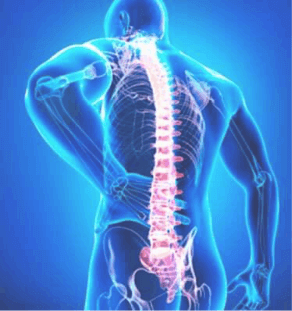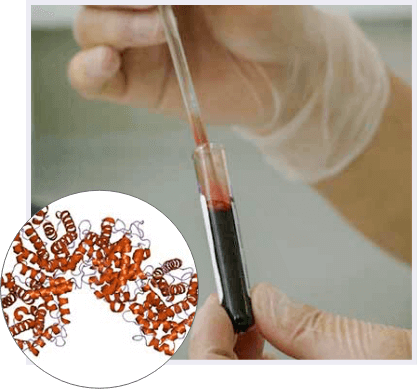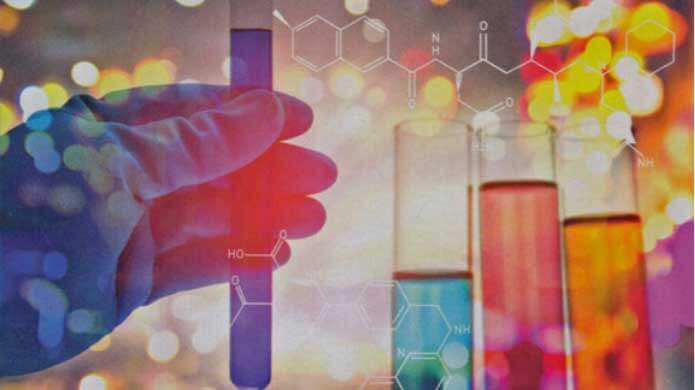Injection therapy using stem cells, while considered by some as a new treatment, is fast becoming recognized as an alternative to surgery in cases of degenerative disc disease. With injection therapy, new stem cells are taken from the patient and injected into the area needing treatment.
Spinal disks are like connective tissue between vertebrae. They function as shock absorbers and allow the back to bend and twist.
As a person gets older, spinal discs become more susceptible to injury. They can lose moisture, making them thinner and unable to absorb shocks as well. In addition, strenuous activities can create tears in the outer walls of the discs.
Degenerative disc disease is a condition that occurs when changes in the discs of the spine cause pain. Factors such as genetics, obesity, smoking, and injuries can exacerbate disc degeneration.
The severity of pain ranges from mild to severe. Symptoms can come and go, but in many cases, the pain caused by degenerative disc disease can negatively affect quality of life and result in decreased functionality.


Treatment options for degenerative disc disease include physical therapy, NSAIDs, and pain relievers. When these conservative approaches don’t work, surgery is often recommended.
In New Hampshire and elsewhere around the country, stem cell injection is becoming recognized as an exciting new treatment for back pain. Minimally invasive, it is seen as an ideal alternative to surgery.
At Boston Applied Biologics, the treatment process begins with an MRI of the lower back and a full evaluation. This helps the physician determine the actual cause of a patient’s lower back pain and confirm the diagnosis of degenerative disc disease. Afterward, the physician may recommend a stem cell treatment.
Once you have decided to undergo the treatment, your individualized treatment plan will be built around your responses to clinical tests. Your previous medical history will also be taken into account.
In stem cell therapy, healthy cells from the body are collected from the patient’s own bone marrow and plasma. After these cells are minimally processed, they are injected back into the patient in the affected area.
The cells support the self-healing of the affected spinal discs. They can help generate new tissue, repair injuries, and slow down, reduce, or even eliminate inflammation. In addition, they can help prevent further damage to spinal discs.
Shorter Recovery Period
The recovery time after lower back surgery can range from 1 to 4 weeks. People with physically challenging jobs may not be able to return to work after back surgery until 8 to 12 weeks after the surgery.
In contrast, people who have had stem cell treatments report a much faster recovery period. For a few days after the procedure, the patient may feel sore at the injection site. However, the discomfort is minimal.
It is possible to return to normal daily activities within a week. The injected cells begin the process of repairing immediately so it is not surprising to note that significant recovery may come in just a few weeks.
Fewer Medications
After back or disc surgery, a patient may be required to take a course of antibiotics or other medication to support the healing process and prevent infection. The doctor may also prescribe painkillers after surgery.
With stem cell treatments, the patient may feel slightly stiff at the treatment area. However, pain can be managed with over-the-counter medications like acetaminophen or rarely prescription medications. In addition, antibiotics are typically not needed.

Relatively Quick Procedure
Back surgery may take several hours, not including the prep time before the procedure. In contrast, the bone marrow draw takes a few minutes while the entire stem cell treatment may take up to three hours.
Reduced Risk
While all medical procedures carry some sort of risk, stem cell therapy is safe because it is minimally invasive and the patient’s own stem cells are used. This minimizes the risk of rejections, infections, and other side-effects associated with back surgery.
At The Boston Stem Cell Center, we do our stem cell therapies under X-ray fluoroscopic guidance. This increases accuracy and decreases the risk of complications.
Often, only one stem cell injection is needed to achieve healing and pain relief. The new stem cells will take time to repair damaged tissue. Afterward, patients may see significant improvements in their symptoms. In many causes, patients start to experience pain relief within the first few weeks or months after treatment.
Apart from pain relief, some of the benefits patients may experience after a stem cell treatment are:
With stem cell treatments, patients with degenerative disc disease may no longer need aggressive therapies such as back surgery and long-term medication.
New Hampshire residents with degenerative disc disease can turn to Boston Applied Biologics for injection therapy. When you visit us for your initial consultation, our medical director will recommend a personalized regenerative medicine treatment for you.
Our stem cell treatments are a combination of bone marrow aspirate and platelet-rich plasma. This three-pronged approach activates your body’s natural healing ability.
To learn whether stem cell treatments are right for you, reach out to us to schedule a consultation. We look forward to helping relieve your pain and improve your quality of life.
IMPORTANT! This information is for educational purposes only and is NOT intended to replace the care or advice given by your physician. Boston Applied Biologics is not offering regenerative cell therapy or other regenerative therapies as a cure for any condition, disease, or injury. No statements or implied treatments on this website have been evaluated or approved by the FDA. This website contains no medical advice. All statements and opinions provided by this website are provided for educational and informational purposes only and we do not diagnose or treat via this website or via telephone. We do not claim that any applications, or potential applications, using autologous regenerative cells and other regenerative cells are approved by the FDA, or are even effective. We do not claim that these treatments work for any listed nor unlisted condition, intended or implied. Always seek the advice of your physician or other qualified health provider before starting any new treatment or with any questions you may have regarding a medical condition. For more information see our Medical Disclaimer.
Copyright © 2025 Boston Applied Biologics, LLC. All Rights Reserved.

How Orthobiologic Therapy can relieve your joint, muscle and tendon pain without surgery so that you can get back to enjoying your life*
We are committed to your privacy. Boston Applied Biologics uses the information you provide us to contact you about relevant content, products, and services. By providing us with your information you are consenting to the collection and use of your information in accordance with our Terms of Service and Privacy Policy. You may unsubscribe from these communications at any time.